The degree has come under attack in recent years, but many say it’s worth the investment. Just know what you’re looking for—and consider a few alternatives.
“MFA stands for yet another Mother-Fucking Artist,” declares one of the disgruntled students in a CalArts “crit” visited by Sarah Thornton in her savvy and entertaining romp Seven Days in the Art World. Granted the book was published a decade ago, but sentiments toward the degree have mostly worsened, with many critics decrying the huge expense (easily up to $100,000 for two years in a “name” program (like CalArts ,Yale, Columbia, or RISD) and lackluster teachers—especially those whose positions are “based on doubtful credentials, long-ago, onetime accomplishments, or…good-old-boy connections,” wrote critic Jerry Saltz in 2014.
MFA degrees are perilously close to Ponzi schemes, some have argued, and most favor too much ideological bluster over hands-on training. “Zealous theoreticians continue to scare the creativity and opinions out of young artists and critics,” Saltz further thundered. “Too many students make highly derivative work (often like that of their teachers) and no one tells them so. A lot of artists in these programs learn how to talk a good game instead of being honestly self-critical about their own work.”
There’s been enough bad press about the MFA degree in recent years that I decided to ask about a dozen site members if they felt their time spent in graduate programs was worth the investment, both financial and intellectual. Overwhelmingly the majority said yes, for the possibly intangible reasons that critics of the MFA can’t or won’t suss out. Others had serious reservations, as you’ll read below. I am mindful that most of the artists I reached out to are in their late thirties or older, but that seems to be the Vasari21 demographic (and that’s perfectly okay by me).
Why Do It?
Of course the main reason for pursuing an advanced degree in art is the chance to gain an education beyond the college level and plunge into the solitary pleasures of sustained work in a way that may not be possible, particularly for a young aspiring artist. “The MFA program might be the only time one gets to fully immerse oneself in the exploration of making art,” says Jackie Skrzynski. “During that time, I would look back at the end of each year and marvel at how much I had learned. It felt like ten times what I could have learned on my own.”
“I wanted the whole thing—the whole experience,” says Virginia Katz, who attended grad school at California State University, Long Beach, 15 years after getting her B.A. “I wanted a deeper relationship with art and to get brought up to speed. School had a lot to offer in terms of technical education, but also theoretical and conceptual. I did not have formal training, and I really wanted that. And the constant feedback on one’s work that you receive when you are in school is something that’s very scarce when you’re out and can really shape one’s skills in being self critical.”
The crit—in which students and teachers assess participants’ progress, usually in a group setting—is by now an inevitable part of the grad-school curriculum. As described in Thornton’s book, where a chapter is devoted to her observations during a session at CalArts, it’s a nerve-racking and occasionally savage confrontation. Summing up some of her experiences in grad school, Daisy Patton adds that “many programs can be almost like hazing.”
But on the plus side, students learn to discuss and defend their work, and that’s a big part of being out in the real world, where you will encounter all manner of dealers, writers, and eventually collectors, including the inevitable rejections. “Experimentation and play, developing an individual voice, sharpening critical skills—but also developing a thick skin—were all an important part of graduate work and learning,” says Karen Schifano, who earned her degree from Hunter College in New York.
Teachers are another attraction. Anne Gilman, who attended Brooklyn College in the 1980s and is now an adjunct professor in the MFA program at Pratt Institute, says that Lee Bontecou was a big draw for her. “I sought her out in particular,” she recalls. “She made herself very accessible, and she was a practicing, successful artist I’d known about since high school. She also had a child, so she was a role model I could identify with. She was the best thing about going for an MFA.”
Yet the names need not be as famous as Bontecou’s to be memorable and useful. “Some of the contacts formed in school became lifelong, not for ‘career’ reasons, but because they continued to be important friends and mentors after school ended,” says Emily Berger, who got her MFA from Columbia. “For instance, after taking Bob Blackburn’s printmaking class, I could continue at his workshop in lithography once school ended. And I was able to work for Jenny Snider after graduation. These contacts were important for transitioning to being on my own as an artist in New York.”
But the biggest advantage of grad-school programs, members pointed out over and over, is the community that takes root and grows over the years. “The most significant thing I gained from the experience was the relationship with the others who were in my program,” says Rachel Hellmann. “Thirteen years later my go-to people for advice, support, or critique are those I met in grad school.” Martha Russo adds that she regularly communicates with three or four artists she got to know well while in the MFA program at Colorado University, 20 years ago. “I never would have met these people otherwise,” she says. “It’s all about networking and connecting—we put in each other’s names for collaborative projects—and I’m still in touch with my professors as well.”
The Negatives
Many go into an MFA program in the hopes that the degree might secure a teaching post, and thus benefits, a steady salary, and the hopes of tenure. But know that the competition is stiff. In spite of the high cost, MFAs are being cranked out at ever-increasing rates. “According to the National Center for Education Statistics, data dating back to 1970 shows that the number of Master’s degrees granted in the visual and performing arts has been rising every year in the last decade,” reported The Atlantic four years ago. The teaching ranks are “overwhelmingly composed of poorly paid adjuncts,” wrote artist Coco Fusco in an essay for Blouin Artinfo. Which generally translates into unglamorous classes—teaching elementary drawing and painting, for example—with no guarantees of security or much of a living wage.
Some also believe that graduating from a name school might smooth the path into the “real world” of galleries and museums. “Students who go to high-profile schools get a subtle eighteen-month bump after they graduate, in part because dealers and collectors…see their M.F.A. shows,” reported Saltz. And artist Jamie Hamilton, who recently relocated from Santa Fe to Los Angeles, says that “some galleries in L.A. will consider only artists from seven or eight schools. If you look at who’s having shows, it’s very likely you’ll see degrees from Yale, UCLA, CalArts, Columbia, RISD, University of Chicago, Virginia Commonwealth, and the like.”
The downside, he points out, is a certain sameness about the work. “To me, the framework feels academic, didactic, and topical. It intends to encourage a socially constructive response in the viewer. The topics mostly address gender, culture, ethnicity, nationality, ecology, and globalization. The art is supported by lengthy explanatory texts which suggest meanings that expand social relevance. And the making is often outsourced to fabricators and preparators.”
If you’ve been out of school for a while, working on your own, more schooling might even be a mixed blessing, bending your mind and talents in directions that feel alien. Once he was part of the graduate program at the Maryland Institute College of Art, Jim Condron reports, “I lost my sense of self and made safe work. I’m not proud of that, or about how I was as a person while in the program, but I am thankful I have the degree, as I now teach there and at other colleges, and I’m part of the MICA community. In a backward sort of way, the experience shaped me dramatically as an artist. I learned how to be true to myself.”
You might also go in pursuit of the MFA only to discover that a possible mentor has vanished. “There was one person I identified as someone I wanted to work with,” says Peter Roux, who earned his degree from Massachusetts College of Art when he was in his twenties. “But by the time I got into the program he had moved on so that didn’t happen. I felt a bit like I was going through the motions to get to the other side.”
If You Are Considering the Degree….
Most would say to keep the cost foremost in mind. “I encourage my students to find a place you’ll come out of debt free,” says Russo, who worked as a teaching assistant during her years at CU, Boulder.
State-sponsored schools with perfectly respectable faculties and nominal tuitions offer the classes, experience, and community to launch a career. Counsels Saltz: “It’s time for applicants to bite the bullet and consider the enormous benefits of less expensive, less sexy-sounding schools that will leave them with much less debt.”
And there are myriad ways around the grad-school mill. “I was rejected repeatedly [from admission to MFA programs] for over the course of a decade and eventually gave up in 2006,” says Christopher Rico. “At that point, I felt that getting a small-business loan to rent a studio was a better debt proposition, and that’s what I did. No regrets.
“I honestly think if someone is/wants to be an artist and is unwilling to compromise, no matter what, they should try to stick out the undergraduate experience and then move to a major city or thriving arts town and embed themselves in that scene,” he continues, adding, “I have seen talented artists get sucked down the theory hole into paralysis, largely at the master’s level.”
Hamilton, who worked for Judy Pfaff as head studio assistant while in his twenties, opted for advanced study with a prestigious low-residency program called Transart, which offers different degrees minus a set curriculum and a physical campus. He particularly values the amount of writing required because so much of the work was online. As were meetings with mentors. “You had a project you worked on with your adviser, and then twice a year we would all get together, students and the faculty of the entire school.” At about $10,000 a year for part-time enrollment, it’s not cheap, but it’s far less of a stretch than Yale or RISD, which both run about $40,000 a year for tuition alone.
Other artist members of Vasari21 recommend at least a year off after acquiring an undergraduate degree and point to low-cost alternatives to a formal course of study. “There are different places where you can find workshop scenarios, or you can hire an artist you admire to be your mentor,” says Tracy Linder. Artist Patricia Miranda, for instance, hosts a series of “critlabs” at her studio in Portchester, NY, and other venues. These offer what she describes as “rigorous, critical, supportive feedback in small ongoing artist groups.” For technical skills, of course, there are always specialized classes at community colleges, museum education programs, and places like the Art Students League in New York
“What you want and what you need,” Linder adds, “really have to be researched before you write that big check.”
For Further Reading
Seven Days in the Art World, Sarah Thornton, W.W. Norton and Company, 2010
“M.F.A.s: An Increasingly Popular, Increasingly Bad Financial Decision,” Bourree Lam, The Atlantic, December 2014
“Debating an MFA? The Lowdown on Art School Risks and Returns,” Coco Fusco, Modern Painters, December 2013
“An M.F.A. Degree Is Too Expensive, and That’s Only the Start of the Problem,” Jerry Saltz, Vulture, December 5, 2013
Ann Landi
Top: Rachel Hellmann in her studio
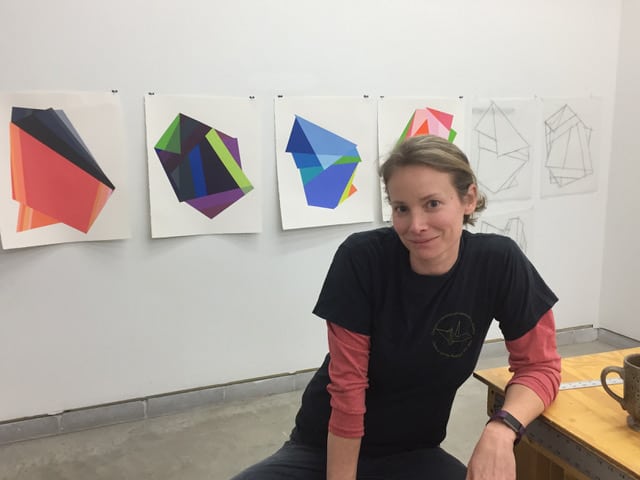
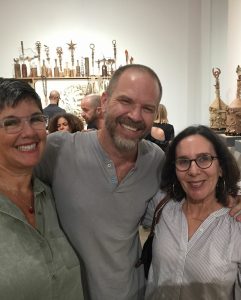
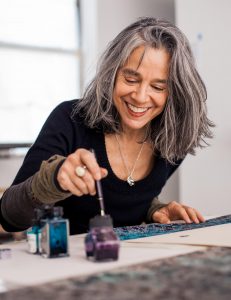
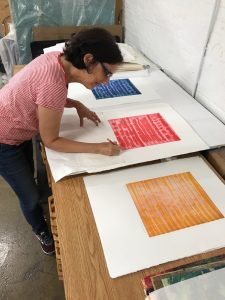
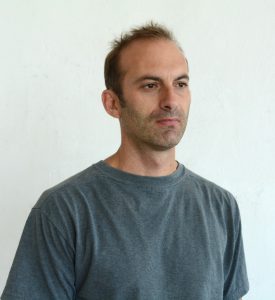
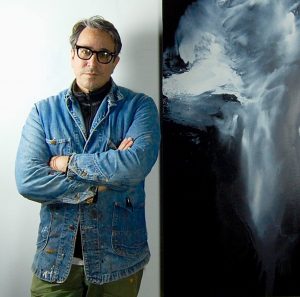
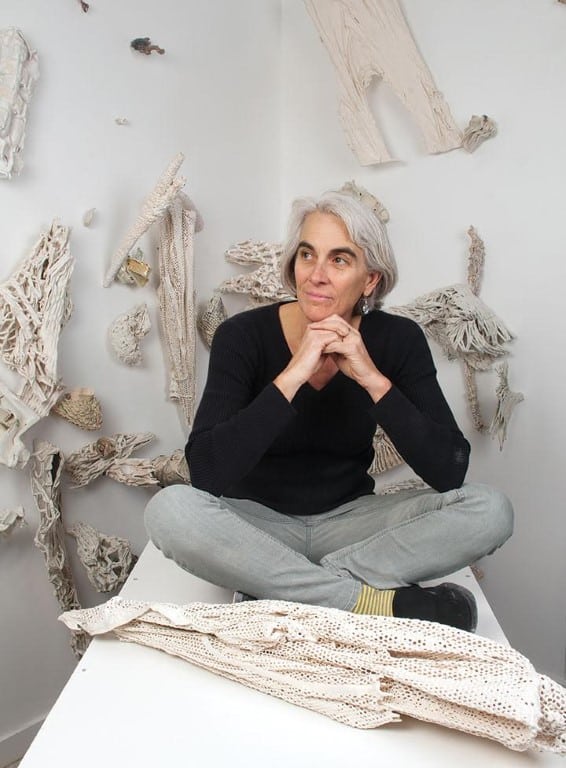

I value Higher learning and in 2013 when I was in the middle of breaking through to the painting work I’m doing now, I applied to the TCU MFA program in painting. It was just after I turned 50 and had a very established professional career as an architect. I’m also a father to two kids who where 13 and 11 at the time (midlife melt down I guess). My world rocks when I’m painting and at the time I believed I needed a focused environment to really become successful. Much to my surprise I was readily accepted by TCU. It’s the kind of success that stopped me in my tracks with a – now what? In the end, I couldn’t justify the sacrifice both in time and money that it would have required. So, I made up my mind to double down on my own as a developing painter. I’m glad I did because I might not have followed the path I’m currently on. Every time I attend gallery night in Fort Worth, I realize just how unique my work is becoming amongst all the post modern figurative and landscape work being produced by other mostly younger artists. I’m knocking the work…I greatly appreciate visual art that tells a story. But, pattern and process based work like mine no longer seems ascendant. It means I have to focus on quality and double down again. I’ve allowed my work to become more colorful and lyrical as a result of exposure to younger artist working in often bright jarring colors. I still have a few regrets over not having an MFA, but I’m finding my own way.
Graduate school for an MA degree, ( 1967 ) , in painting and printmaking for me was invaluable. It was, of course,
because of the men who were my teachers, mentors, advisors and counselors. San Jose State, California, tuition was
only $23.00 per term for in-state residents. A year later it rose to $60. with R. Regan’s election to Governor. The kind of thoughtful, authentic and insightful critiquing, has never since been encountered or replicated .
Very interesting post. I think that getting an MFA can be a definite benefit to those coming to art-making after an academic education or after you’ve had another career. From what I see the biggest problem is young folks who bounce right out of art school into an MFA program, without having any real life experience, either as a working artist or just as anything. It’s a kind of prolonged adolescence and I think that often times their artwork would be richer and smarter if they stepped outsid of the bubble.
Thank you for this article Ann. It is a question….MFA program… I have debated for some years now. Art being a second career(after an undergrad degree in education and a Masters in social work), there are things that I want to “fill in” but much of what you and your contributors address are the issues and concerns (cost, time, direction) with which I wrestle. Patricia Miranda’s critlab groups have been invaluable to me in moving my work forward and I still think about pursuing a masters degree through a low residency program in the future.